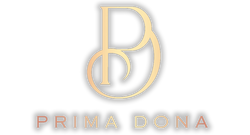It all started with the concept of Anne Lamott's Sh*tty First Drafts that I learned in novel-writing class. The theory is that before you can write something great, you need to write something good. Before you can write something good, you need to write something bad. Before you can write something bad, you need to write SOMETHING. So when we write novels, we write a bad first version and then add/remove/edit till it's good then great.
This takes a LOT of pressure off because guess what, sh*tty first drafts are supposed to be… sh*tty
I loved this method for writing and wondered how to apply this to business. A few years ago, I came up with an ideation framework called 100 Bad Ideas. Overall, you come up with as many "bad" ideas as possible to solve a specific problem. The more ridiculous the idea, the better because great ideas will eventually emerge once you get rid of the pressure to have "good" ideas. Once you have a list (it can be less than 100), you identify a specific number to actually do an experiment to try the idea. This can be 20 ideas turned experiments, it can be 5, it can be 1. All depends on the participants. Some of these experiments will be wins and some will be "learns". Either way, you'll have more success than sitting around trying to find the "perfect" idea.
The way it works is this:
1. You identify a question or a problem. This can be anything. Questions I have asked in recent years are things like, "How can we introduce low-code tech to people who might not be aware of all the things it can do for them?" for my day job of dev evangelist or "What are some creative, inclusive marketing ideas for a modern fashion line?" for Prima Dona.
2. You choose the participants. I usually do this with others, but you can do this by yourself, with another person, or with a team. If you're doing this with others, it's really beneficial to get outside your immediate team and choose people you might distantly work with, with people new to your industry, or folks who might not get to use their full creative vibes on a day-to-day. It's pretty entertaining and fun with a team. You can do this physically IRL or virtually. The biggest team I have done this with so far is 20 people.
3. You choose the tool. I use a shared spreadsheet, but you can use anything that works for you, including an IRL whiteboard or digital whiteboard. As long as everyone has an accessible way to participate, the tool can be anything. You can each write ideas on your own, or you can yell them out and have someone act as a scribe. NO JUDGING of other people's ideas allowed. The categories I use are as follows and are also shown in the screenshot of a spreadsheet
- Idea - what is the idea
- Suggestor - who's idea is it
- Like - this is an optional column if you want to upvote the idea
- Sponsor - who wants to lead the experiment
- Priority (Do Now/Do Later) - when do we want to do this
- Notes

4. Ideation. For the initial ideation phase, forget about anything EXCEPT Ideas and Suggestors. Just get them all down on "paper" first. Seeing other people's ridiculous ideas will definitely help you drop your own filters and come up with ideas of your own that are actually quite good. One of my ideas for low-code was "borrowing" an unused cruise ship to dock up to Chile and teaching everyone to low-code -- yikes, jail time! This lead to the good idea of working with community colleges to get low-coding into the curriculum. On the Prima Dona side, a bad idea was crashing New York Fashion Week with protest signs about their tailors getting such low-wages and wearing our MOST fabulous fashion…yes, getting banned from New York Fashion Week with a LOT of media attention. A good idea that emerged from this was to ONLY participate in fashion shows that focused on sustainability and fair-pay.
5. Experiment choosing. Once you have a good number of ideas--probably over 25, you can sit with your group and decide which you want to run as experiments, who wants to sponsor what, who wants to be on what experiment team, etc. And you can come back to this list for the next set of experiments, etc.
We used this framework to come up with the Autumn/Winter Prima Dona collection called #RevengeFashion--based on the idea that some of us are tired of sweatpants and are ready for some beautiful meeting to happy hour pieces even if we're still working from home.
Overall, HAVE FUN. This is a great way to get out of the rut of your usual role and realize how much you really know.
Go forth, be bad, be creative and #DoTheThing
----------------------------------------------
Dona is the co-founder and Chief Creative Officer of Prima Dona Studios. We strive to be the most inclusive fashion line in the world. There are a million fashion lines in the world--but how many of them count some of the most powerful people in tech and business as their customers? We do. Find our new #RevengeFashion collection here: https://primadonastudios.com/
